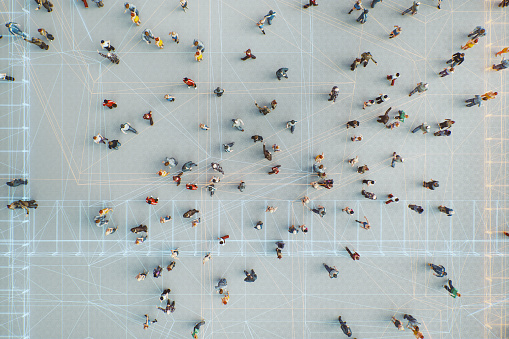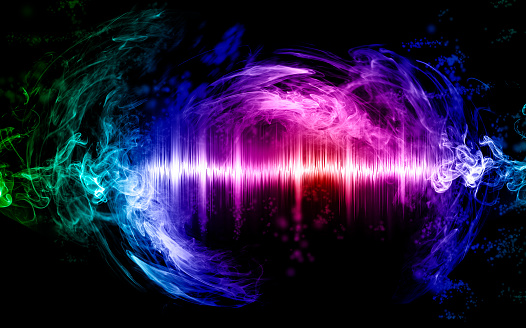Mental Health Frequency: Categories of Balance
Mental health frequency often requires a view into categories of balance.
And how to analyze balance? On an average day the natural energy of a person may ebb and flow. The key is maintenance of energy so that the dips can be quickly recovered and the highs are productive including recovery activities.
Can you think of the last time you felt stress, distressed, uncomfortable or some type of specific mood or physical strain? (Think of irritability, anger, sadness, worry, physical pain that can be sharp, tension, pulsing/pounding in the body).
Here we are looking in areas such as cycles/ patterns, fear/ anxiety, and how changed frequencies impact who we come close to, who we pull away from and how we are thus socially impacted.
In this article, we will explore the concept of emotional energy frequencies, their impact on our lives, and ways to harness positive emotional energy.
Mental Health Frequency is Impacted by Familiarity in Cycles

Patterns in life, choices often repeated, they relate to a current frequency. They can also initiate a frequency. A lot of times we may choose repetitive methods of doing things.
When the outcome or process is pleasant we will rarely complain. But when we start to realize a poor result, it can be possible to recognize the pattern and change, but sometimes that can prove difficult.
Do you know and recognize unhelpful or helpful patterns in your routines? An unhelpful pattern is a behavior, thought or condition that results in more distress.
Helpful patterns generally result in improved mood and daily functioning.
Mental health patterns are essential for individuals to maintain their well-being. By recognizing patterns in one's mental health, individuals can take proactive measures to address any negative changes in their mood, thoughts, or behaviors.
Mental health energy frequency and such relevant categories rely on understanding mental health patterns, which can also help individuals identify triggers that may worsen their mental health and implement coping mechanisms to mitigate these triggers.
Mental health patterns vary among individuals, and it is essential to seek professional help if one experiences persistent negative patterns or changes in their mental health. By prioritizing mental health and recognizing patterns, individuals can lead a fulfilling and healthy life.
Operating from Frequency of Fear and Impacts on Mental Health

Fear is another example of the ego changing mental health frequency. We naturally have defense mechanisms for both our physical bodies and our emotional health.
We can see how hesitation can protect us if forward motion would be dangerous. If while driving the road becomes bumpy with large potholes and rocks, we know to slow down and take a closer look.
Sometimes that fear is going to save us from harm. But other times the fear is based on a perception. If I avoid applying for a job due to fear of rejection, I may never get a job other than by luck.
Fear can have a significant psychological impact on individuals. When faced with a fearful situation, the body responds by releasing stress hormones, which can cause physical symptoms like increased heart rate, sweating, and shallow breathing.
Mental health energy frequency and categories related to fear can be either formally diagnosed conditions or informally diagnosed sets of symptoms. Over time, chronic fear can lead to negative psychological effects like anxiety, depression, and even post-traumatic stress disorder (PTSD).
Fear can also affect an individual's ability to make rational decisions and engage in social interactions.
Therefore, it's important to address fear and its impact on mental health. Seeking therapy, practicing relaxation techniques, and engaging in activities that promote self-care can help individuals manage their fears and improve their mental health.
Attracting through Similar Frequency (Shifting Mental Health)
Mental health energy frequency includes the category of “attraction.” With the concept of attraction, people of similar frequencies may attract similar energies.
Some people may notice a shift in their mood or mental health when they are interacting based on an attraction.
Not all attractions are going to result in positives. In some attractions, one person gives more and the other takes more. These frequencies may be opposites.
Frequency and Connection (Social and Mental Health)

Usually people who remain in touch are in a connection.
Social connections can impact mental health and frequency.
It is common to interact within different groups of friends and social circles at different life stages and dependent upon goals. moving, types or work or areas of residence.
Social connections are essential for maintaining good mental health. Mental health energy frequency and the category of social connections involves research revealing that individuals who have strong social support systems are more resilient to stress and have a lower risk of developing mental health issues like depression and anxiety.
Social connections also provide individuals with a sense of belonging, which can boost self-esteem and confidence.
Engaging in social activities and building positive relationships with others can improve an individual's overall well-being.
However, it's important to note that social connections should be genuine and meaningful, rather than just surface-level interactions. Building and maintaining strong social connections takes time and effort, but the benefits are invaluable for mental health.
Summary
Emotions are an integral part of our lives and affect our behavior, thoughts, and overall well-being. Emotional energy frequencies are the vibrational frequencies that correspond to different emotions.
These frequencies are believed to influence our thoughts and behavior, which, in turn, can affect our physical and mental health.
Understanding Emotional Energy Frequencies

Emotional energy frequencies are based on the idea that everything in the universe vibrates at different frequencies. Each emotion has its unique vibrational frequency that can be measured through scientific methods.
Mental health energy frequency and such relevant categories include examples of emotions like joy, love, and gratitude vibrate at higher frequencies, while emotions like anger, fear, and sadness vibrate at lower frequencies.
According to the Law of Attraction, like attracts like, which means that the emotions we feel and the thoughts we have attract similar energies into our lives. Therefore, if we vibrate at higher frequencies, we attract positive experiences, whereas if we vibrate at lower frequencies, we attract negative experiences.
The Impact of Emotional Energy Frequencies on Our Lives
Our emotional energy frequencies have a significant impact on our lives. Emotions like love, joy, and gratitude are associated with positive outcomes like improved physical health, better relationships, and increased happiness. In contrast, emotions like anger, fear, and sadness can lead to negative outcomes like stress, anxiety, and depression.
Studies have shown that negative emotions can also weaken our immune system and increase our risk of developing chronic diseases like heart disease, diabetes, and cancer. On the other hand, positive emotions like gratitude have been found to boost the immune system and improve overall health.
Harnessing Positive Emotional Energy Frequencies

Fortunately, we can harness positive emotional energy frequencies by cultivating positive emotions and thoughts. Here are some ways to do so:
Practice Gratitude
Gratitude is one of the most potent emotional energy frequencies. When we focus on what we are grateful for, we raise our vibrational frequency and attract more positive experiences into our lives. To cultivate gratitude, take some time each day to reflect on the things you are grateful for, whether it be your health, relationships, or career. You can also write a gratitude journal, where you jot down things you are grateful for every day.
Engage in Activities That Bring You Joy

Engaging in activities that bring us joy and pleasure is another way to raise our vibrational frequency. Whether it be listening to music, practicing a hobby, or spending time with loved ones, these activities can help us feel more positive emotions and attract more positive experiences into our lives.
Practice Mindfulness
Mindfulness is the practice of being present and fully engaged in the moment. By focusing on the present moment, we can reduce stress and anxiety, and increase feelings of joy and contentment. To practice mindfulness, take some time each day to sit in silence, focus on your breath, and observe your thoughts without judgment.
Practice Self-Compassion
Self-compassion is the practice of treating ourselves with kindness and understanding, just as we would treat a good friend. By practicing self-compassion, we can reduce negative self-talk and increase feelings of self-worth and positivity. To practice self-compassion, try to speak to yourself as you would speak to a good friend, and focus on your strengths and positive qualities.
Surround Yourself with Positive People
The people we surround ourselves with can have a significant impact on our emotional energy frequencies. Surrounding ourselves with positive, supportive people can help us feel more positive emotions and attract more positive experiences into our lives. On the other hand, spending time with negative, toxic people can lower our vibrational frequency and lead to negative experiences.
NOTE: Through the last few days (Days 18-21; April 1-4) I have remained ill and thus unable to record podcast episodes.
I am hoping this is at least interesting. I did not want to go backwards or record a long episode.
Socials
SPOTIFY
APPLE PODCASTS
ANCHOR
Any interest in working in an LGBTQ+ tech job? (Or even obtaining tech work and adding potential representation of the LGBTQ+ community as an employee at a tech job? Consider affordable training HERE! (Note: This is an affiliate link https://account.coursecareers.com/ref/29926/ and I receive a compensation for any registrations made through my link).
Interested in breaking into the tech field through CourseCareers training? Here is a code for $50 off!
DISCOUNT CODE: IGZDVLGJSK